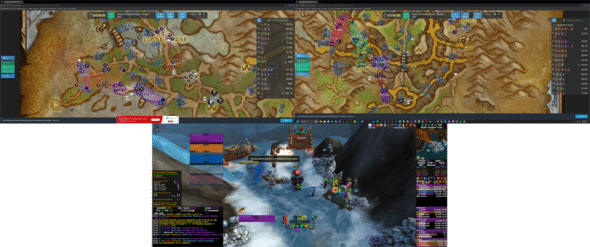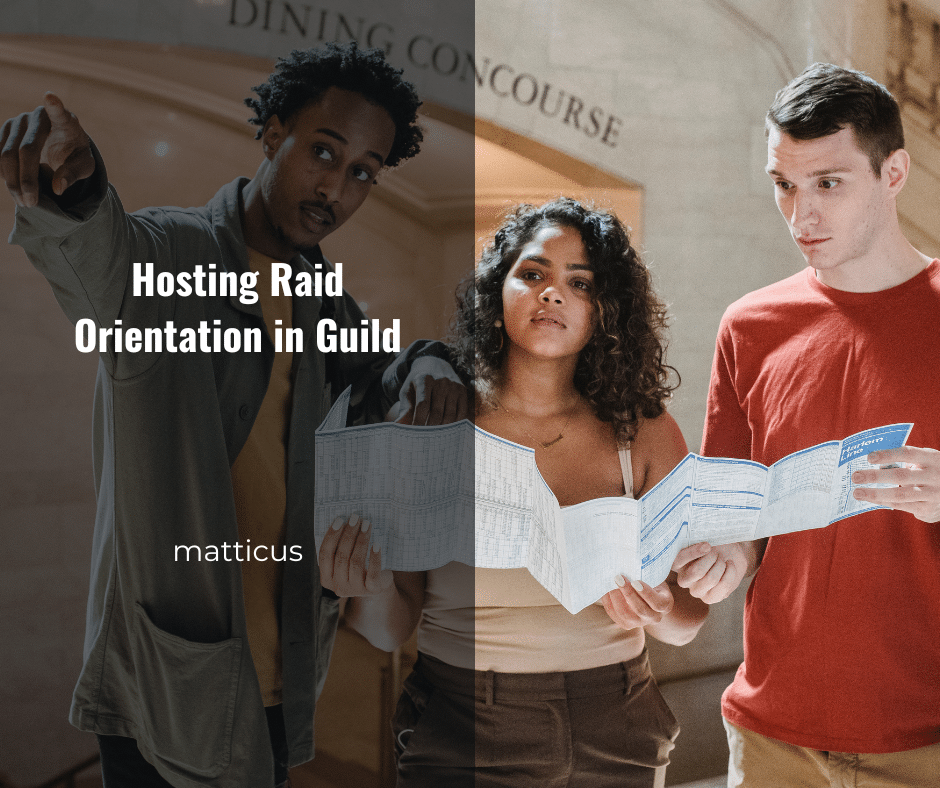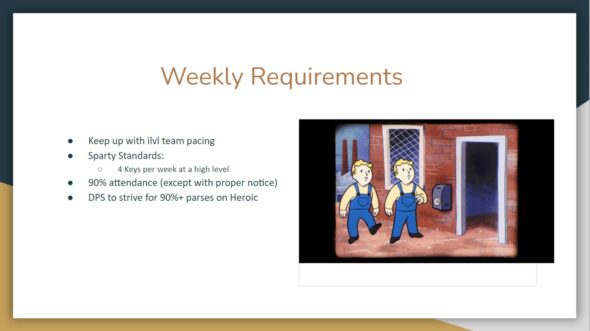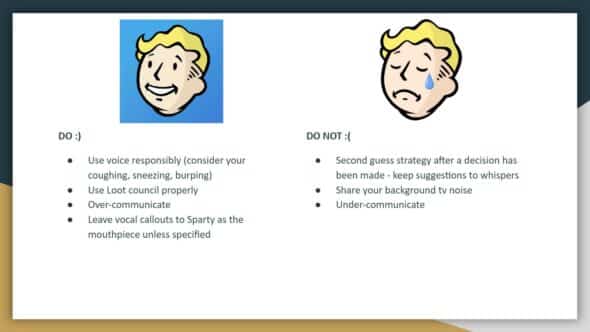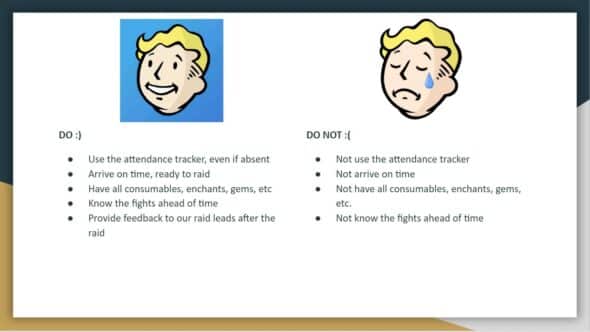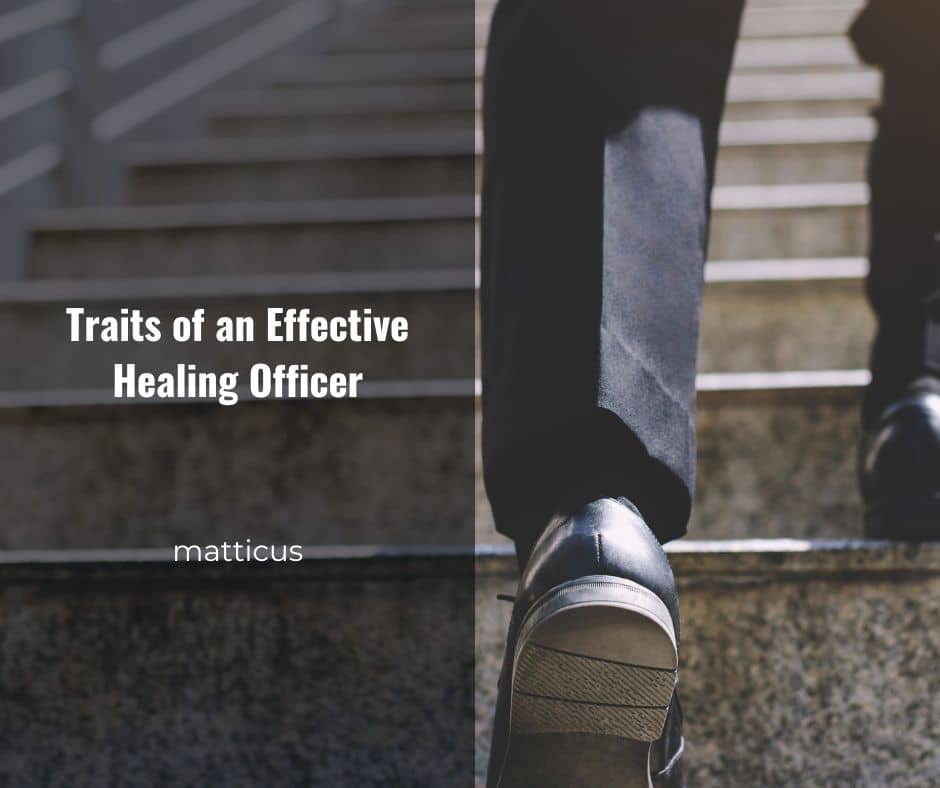Progression raiding isn’t just showing up and pulling the boss until it dies. There’s an entire apparatus working behind the scenes, especially if you’re trying to clear content at a competitive level or with limited time each week.
I currently raid on two separate Mythic teams: Death Jesters and Last Call. DJs typically clears bosses earlier, so I get a front-row seat to all the chaotic pain points and key moments before taking it all back to Last Call.
It’s given me a pretty sweet vantage point from the leadership seat and from the player seat.
Here’s what real raid preparation looks like from both angles.
From the Leadership Perspective
As a raid leader, my job starts way before the raid does.
Scout the Encounter
Each week, I’ll review my own footage, either from our Death Jesters kills or select YouTube videos. DJ’s progression becomes valuable intel for Last Call. I can record our pulls and share edited clips or full kills with commentary. I use Warcraft Recorder extensively for this.
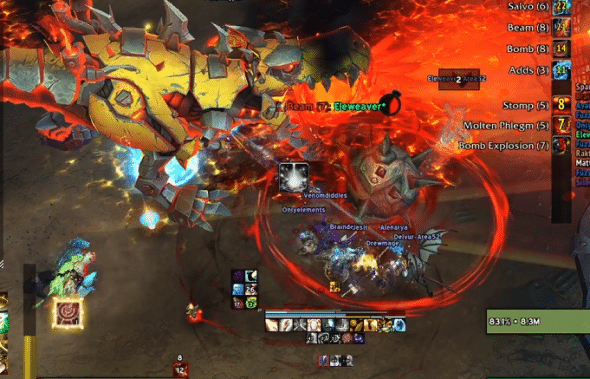
Tip
Before we pull a new boss, I’ll often do a live screen share on Discord with the team and narrate key moments from a boss kill video.
I fast-forward through the slower or easy phases and break down:
- What to watch out for
- Where people usually die
- Where movement, positioning, and cooldowns must line up
This gives the team a better understanding of the flow of the fight and avoids info overload from a wall of text. They may not be able to experience it themselves, but it’s the second-best thing, as they can see what is supposed to happen. I find that doing so tends to shave off some of the pull count. However, the raid team still needs to be able to execute it.
Sharing Key Moments
In Discord, I maintain dedicated boss threads with:
- Quick-hit video clips or screenshots
- Critical phases or transitions
- Key reminders (“Only the immune group is soaking”)
It’s open to everyone, though. I encourage the team to contribute and share their own class-specific videos, ask questions on how to handle certain mechanics, or Weak Auras that might be useful.
Tools & Planning
- I use Viserios on Wowutils for early boss planning and cooldown organization.
- I do prepare raid notes using Method Raid Tools to make sure all assignments are visible in-game for everyone.
Cooldown coverage? Already mapped for each boss.
Power Infusions? Pre-assigned.
Group splits and gaol duty on Mug’zee? Handled earlier in the week.
Building the Framework
Everything gets built ahead of time:
- Defensive CD rotations (wish I could offload this more)
- Interrupt assignments
- Movement pairings or group stacks (like the ol’ big red rocket)
- Loot Council decisions on key items
The goal is to remove decision-making points before the pull timer even starts. This is all stuff that can be done earlier in the week before the raid night. Just get it done ahead of time, and you can save it as a note in MRT ahead of time.
Same thing with loot drops.
You can select certain rare items and pre-decide who it will go to ahead of time like Mr. Pick Me Ups, or House of Cards, or Moxie Jugs. This does hinge on everyone submitting their WoW Audit lists ahead of time.
From the Raider Perspective
On the flipside, as a raider (especially in DJs), you’re expected to show up ready to go. That means preparation is non-negotiable.
Know the Mechanics (Really Know Them)
It’s not enough to kinda know the fight. Everyone should already understand:
- When to throw bombs on Gallywix (and where)
- How to drive trash balls on Stix
- The correct taunt swaps as tanks
- Sprocketmonger mine orders
- When and where your personal defensive CDs should be committed (Sometimes we install them for players during key parts, but the rest of the time, they are free to use them)
Positional and Assignment Awareness
You should walk in knowing:
- What group you’re in (or at least, what to do based on the group)
- What platforms or Gaols you’re assigned to
- Who you’re soaking or baiting bombs with
- Where (and when) to stack or spread
And tanks, please don’t ask when to taunt during pull #4. Know it beforehand.
Role-Specific Preparation
If you’re a healer, tank, or utility-heavy DPS, watch class POV videos.
Know your role in the dance. Understand why your cooldown matters (like your Wind Rush Totems).
No one should be guessing what to do when the boss hits 40% and things get spicy.
My Thursday AotC raid group would often panic entering the last phase of Mug’zee with the Jail and Big Rocket overlaps because I didn’t do a good enough job preparing them, despite my efforts. I still have to figure out how to communicate information to the team in a way that makes it digestible and easy to manage, but I realize now that despite all the screenshots or video clips, experience still triumphs. Sometimes you have to put your finger in boiling hot water to know that it’s hot even though you can see steam coming out of it.
The Dual-Team Advantage
Here’s the real secret sauce: I get to see strats live with DJs, then optimize them for Last Call. Think of it as PTR testing with actual stakes.
Every time DJ wipes or pulls off a kill, I extract the lesson and convert it into something practical:
- “We wiped because we didn’t rotate externals here.”
- “You can actually ignore this mechanic with proper movement.”
- “Save your knockback for this timing, not earlier.”
It’s a luxury not every raid leader gets, and it makes me better at both playing and planning.
Final Thoughts
Bosses don’t just die. We make them die.
Every pull is built on preparation:
- Leaders set the stage with vision, structure, and clarity.
- Raiders show up locked in, mechanically and mentally.
The better your prep, the fewer pulls it takes to kill the boss. That’s the magic of progression! The next step is to apply it to Sprocketmonger!
